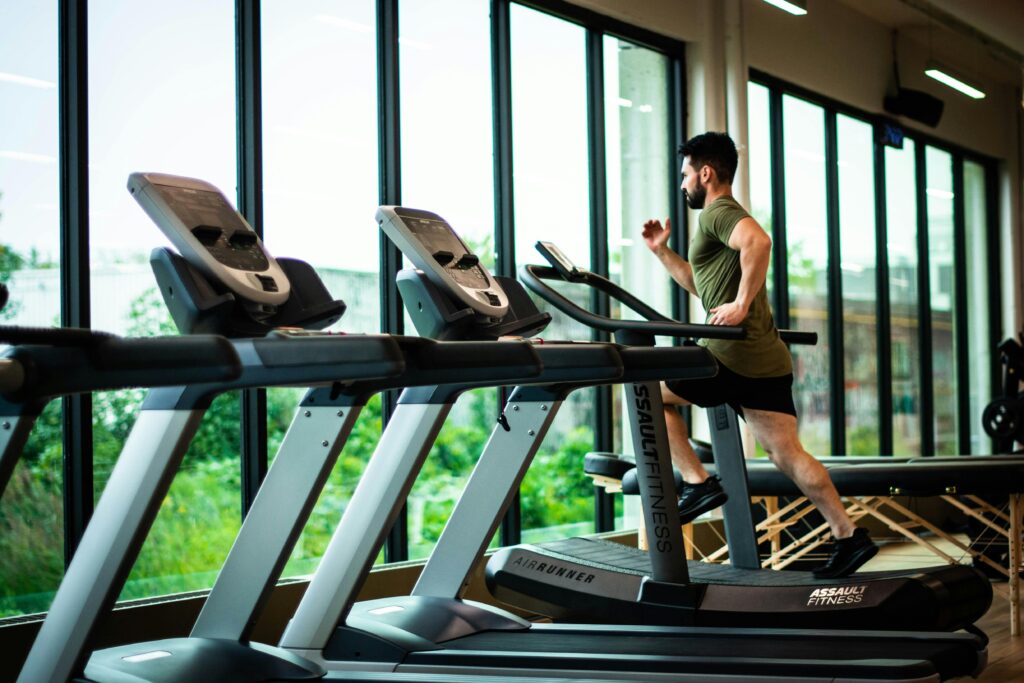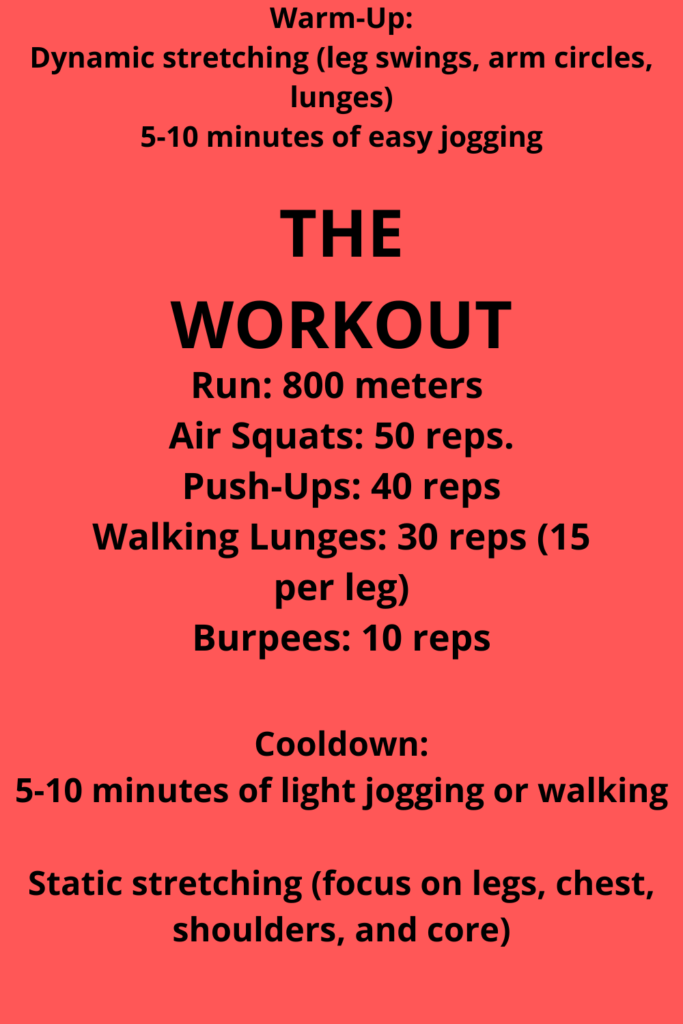Table of Contents
Introduction
Embarking on a CrossFit running journey is an exhilarating endeavor that combines the intensity and diversity of CrossFit workouts with the endurance and exhilaration of running. Whether you’re a seasoned athlete looking to enhance your performance or a newcomer eager to explore new horizons in fitness, CrossFit running offers a dynamic and rewarding approach to training.
In this comprehensive guide, we will delve into the essential components of CrossFit running workouts, providing insights, strategies, and practical tips to help you optimize your training regimen and achieve your fitness goals. From setting clear objectives and selecting appropriate workouts to mastering running technique, prioritizing recovery and nutrition, and cultivating mental resilience, each aspect plays a vital role in your journey towards becoming a stronger, fitter, and more resilient athlete.
Whether you’re aiming to improve speed, endurance, overall fitness, or preparing for a specific race or event, this guide will serve as your roadmap, guiding you through the intricacies of CrossFit running training and empowering you to unleash your full potential. So, lace up your shoes, ignite your passion for fitness, and embark on an exhilarating journey of self-discovery and transformation through CrossFit running.
Set Clear Goals
Before diving into CrossFit running workout, it’s essential to establish clear and realistic goals. Doing so provides direction, motivation, and a framework for your training regimen. Here’s how to set clear goals for your CrossFit running workouts:
Why Goals Matter
Having specific goals gives your training purpose and helps you stay focused and committed. Whether you’re aiming to improve your 5K time, build endurance for longer distances, or enhance overall fitness, defining your objectives is the first step towards success.

Types of Goals
- Performance Goals: These focus on specific achievements, such as running a certain distance in a set time or completing a challenging workout without stopping. Performance goals provide tangible targets to strive for and measure progress.
- Fitness Goals: Fitness goals relate to improving overall health and athletic performance. They may include increasing cardiovascular endurance, building muscular strength and power, or losing weight to enhance running efficiency.


SMART Goal Setting
Follow the SMART criteria when setting your goals:
- Specific: Clearly define what you want to accomplish. For example, instead of saying “I want to run faster,” specify a target time or pace.
- Measurable: Ensure your goals are quantifiable, allowing you to track progress over time. Use metrics like time, distance, or repetitions.
- Achievable: Set goals that are challenging yet realistic. Consider your current fitness level, time commitment, and potential obstacles.
- Relevant: Your goals should align with your interests, values, and overall fitness objectives. Choose goals that are meaningful and personally significant.
- Time-Bound: Establish a deadline or timeframe for achieving your goals. This creates a sense of urgency and helps you stay accountable.
Example Goals for CrossFit Running Workouts
- Short-Term Goal: Improve 5K race time by 1 minute within the next 2 months.
- Medium-Term Goal: Complete a half-marathon (21.1 km) within the next 6 months.
- Long-Term Goal: Qualify for a marathon (42.2 km) within the next year.
Warm-Up Properly
Warming up before a CrossFit running workout is crucial for preparing your body and mind for the physical demands ahead. Here’s why and how to warm up effectively:
Why Warm-Up Matters
A proper warm-up gradually increases your heart rate, loosens muscles, and primes your nervous system for exercise. It enhances blood flow to working muscles, improves joint mobility, and reduces the risk of injury during intense activity.


Benefits of a CrossFit Running Warm-Up
- Increased Blood Flow: A warm-up increases blood flow to muscles, delivering oxygen and nutrients needed for optimal performance.
- Improved Range of Motion: Dynamic movements during the warm-up enhance flexibility and joint mobility, allowing for a fuller range of motion during running.
- Mental Preparation: Warming up mentally prepares you for the workout ahead, helping you focus and get in the right mindset for maximum effort.
How to Warm Up Properly
1. Start with Dynamic Movements: Begin your warm-up with dynamic stretches and movements that mimic the motions of running. Examples include leg swings, walking lunges, high knees, and arm circles. These movements help activate muscles and loosen tight areas.

2.Gradually Increase Intensity: Progressively increase the intensity of your warm-up to elevate your heart rate and body temperature. Incorporate exercises like jogging in place, jumping jacks, or high-intensity intervals to prepare your cardiovascular system for the upcoming workout.
3. Include Specific Running Drills: Incorporate running-specific drills to reinforce proper technique and neuromuscular coordination. Examples include butt kicks, high knees, and A-skips. These drills simulate running movements and help prepare your body for the specific demands of running.



4. Focus on Problem Areas: Pay attention to areas of your body that typically feel tight or restricted during running. Dedicate extra time to stretching and mobilizing these areas to prevent injury and
Choose Your Workout
When it comes to CrossFit running workouts, there are various options to suit different fitness levels, preferences, and goals. Here’s how to select the right workout for you:
Understanding Your Goals
Before choosing a CrossFit running workout, clarify your objectives. Are you aiming to improve speed, endurance, overall fitness, or perhaps preparing for a specific race or event? Understanding your goals will help tailor your workout selection accordingly.
Types of CrossFit Running Workouts
- Interval Training: Interval workouts involve alternating periods of high-intensity running with rest or recovery intervals. These workouts are effective for improving speed, power, and cardiovascular fitness. Examples include short intervals (e.g., 200-meter sprints), long intervals (e.g., 800-meter repeats), and Tabata intervals (20 seconds of sprinting, 10 seconds of rest).
- Distance Running: Distance workouts focus on building endurance and stamina through longer runs. Whether you’re training for a 5K, half-marathon, or marathon, incorporating distance runs into your routine improves aerobic capacity and mental toughness. Start with shorter distances and gradually increase mileage over time.
- Hill Training: Hill workouts involve running uphill to build strength, power, and speed. Hill repeats and hill sprints are effective for improving running form, leg strength, and cardiovascular fitness. Find a steep hill and incorporate it into your workout for an added challenge.
- CrossFit-Style Workouts: Some CrossFit gyms incorporate running into their WODs (Workout of the Day). These workouts combine running with other functional movements like squats, burpees, and kettlebell swings for a full-body workout that improves overall fitness and athleticism.
How to Choose

Consider the following factors when selecting a CrossFit running workout:
- Fitness Level: Choose a workout that challenges you without exceeding your current fitness level. Beginners may start with shorter intervals or distance runs and gradually progress to more challenging workouts.
- Preferences: Select a workout that aligns with your preferences and interests. If you enjoy speed work, opt for interval training. If you prefer longer, steady-state runs, focus on distance running.
- Time Constraints: Choose a workout that fits your schedule and time availability. Interval workouts are often shorter and more intense, making them ideal for busy schedules, while distance runs require more time and commitment.
Now i hope i have helped you to find the kind of workout you want, let’s find the workout that fits best for you.
CrossFit-Style Workouts
CrossFit-style workouts incorporate running into a diverse array of functional movements, creating dynamic and challenging training sessions. Here’s everything you need to know about integrating CrossFit and running:



What are CrossFit-Style Workouts?
CrossFit workouts, known as WODs (Workout of the Day), combine high-intensity interval training, strength exercises, and functional movements. CrossFit emphasizes varied workouts that target different muscle groups and energy systems, promoting overall fitness and athleticism.
How Running Fits In
Running is a fundamental component of CrossFit workouts, offering cardiovascular benefits and enhancing overall endurance. In CrossFit, running is often integrated with other movements like squats, burpees, and kettlebell swings to create comprehensive and intense training sessions.
Examples of CrossFit-Style Running Workouts
- AMRAP (As Many Rounds As Possible): Perform a set of running intervals (e.g., 400 meters) followed by a series of bodyweight or weightlifting exercises. Repeat the circuit for a specific duration, aiming to complete as many rounds as possible within the time frame.
An Example could be my favourite AMRAP workout

Importen notes before you start:
- Adjust the number of repetitions or distance of the run based on your fitness level and goals. Beginners may start with shorter distances and fewer repetitions, while more advanced athletes can increase intensity and volume.
- Maintain good form throughout the workout, especially as fatigue sets in. Focus on quality movement over speed.
- Pace yourself appropriately to sustain effort over the 20-minute duration. Find a challenging but manageable pace that allows you to keep moving consistently.
- Stay hydrated and listen to your body. Take breaks as needed, but aim to keep rest periods minimal to maximize the cardiovascular and metabolic benefits of the workout.
- Track the number of rounds completed and aim to improve each time you repeat the workout.
- Chipper Workouts: Complete a series of running segments combined with a variety of exercises performed in sequence. For example, run 800 meters, then complete a set number of repetitions of exercises like pull-ups, push-ups, and air squats before running another 800 meters.
Let me give you a chipper workout

Importen notes to the workout
- Adjust the number of repetitions or distance of the run based on your fitness level and goals.
- Pace yourself appropriately throughout the chipper to maintain intensity and avoid burnout.
- Focus on proper form for each exercise to maximize effectiveness and minimize risk of injury.
- Record your time to track progress and challenge yourself to improve in future workouts.
- Stay hydrated and listen to your body. Take breaks as needed, but aim to push yourself outside your comfort zone.
EMOM (Every Minute on the Minute): Run a designated distance within a minute, then use the remaining time to perform a specific exercise or series of exercises. Repeat this pattern at the start of each minute for a predetermined duration.

Importen notes to the workout
- Adjust the number of repetitions or distance of the run based on your fitness level and goals.
- Use the first few seconds of each minute to transition between exercises and catch your breath before starting the next movement.
- Maintain proper form for each exercise to maximize effectiveness and reduce the risk of injury.
- Record your time to track progress and challenge yourself to improve in future workouts.
- Stay hydrated and listen to your body. Adjust the intensity as needed to maintain form and finish the workout safely.
Benefits of CrossFit-Style Running Workouts
- Full-Body Conditioning: Combining running with functional movements engages multiple muscle groups and promotes overall strength and conditioning.
- Improved Cardiovascular Health: Running intervals elevate heart rate and improve cardiovascular fitness, enhancing endurance and stamina.
- Variety and Challenge: CrossFit-style workouts offer endless variations, keeping workouts fresh and challenging while preventing boredom and plateaus.
Plyometric Running Drills
Plyometric running drills are dynamic exercises that combine explosive movements with running mechanics to enhance power, speed, and agility. These drills are a valuable addition to any CrossFit running workout, offering numerous benefits for athletes of all levels.
What are Plyometric Running Drills?
Plyometric exercises involve rapid stretching and contracting of muscles, known as the stretch-shortening cycle, to generate maximum force in a short amount of time. When applied to running, plyometric drills improve neuromuscular coordination, proprioception, and overall athletic performance.
Examples of Plyometric Running Drills
- Agility Ladder Drills: Perform various footwork patterns in an agility ladder to improve foot speed, coordination, and agility. Examples include high knees, lateral shuffles, and quick feet drills.
- Box Jumps: Execute explosive jumps onto a sturdy box or platform, focusing on maximal height and power output. Box jumps develop lower body strength, explosiveness, and jumping ability, translating to improved running performance.
- Bounding: Perform exaggerated running strides with an emphasis on pushing off forcefully with each step. Bounding drills enhance stride length, power, and forward propulsion, leading to faster running speeds.
Benefits of Plyometric Running Drills
- Improved Power and Speed: Plyometric exercises develop fast-twitch muscle fibers, increasing the ability to generate explosive force and speed during running.
- Enhanced Running Economy: Plyometric drills improve running efficiency by optimizing stride mechanics, reducing ground contact time, and minimizing energy wastage.
- Injury Prevention: Strengthening muscles, tendons, and ligaments through plyometric training can help prevent common running injuries, such as shin splints and knee pain.
Technique and Form
Proper technique and form are essential components of a successful CrossFit running workout. Mastering running mechanics not only improves performance but also reduces the risk of injury. Here’s how to optimize your technique for maximum efficiency and effectiveness:
Understanding CrossFit Running Technique
CrossFit running technique emphasizes efficient movement patterns that minimize energy expenditure and maximize speed. Key elements of proper running form include posture, foot strike, cadence, and arm swing.
Posture
Maintain an upright posture with a slight forward lean from the ankles. Keep your head up, eyes focused ahead, and shoulders relaxed. Engage your core muscles to stabilize your torso and pelvis.

Foot Strike
Strive for a mid-foot strike, landing with your foot directly under your body’s center of mass. Avoid overstriding, which can lead to braking forces and increased risk of injury. Aim for a quick turnover, with each foot strike transitioning smoothly into the next step, i have found that using the right running shoes hepls me alot with form.
Cadence
Focus on maintaining a consistent cadence (stride rate) of around 170-190 steps per minute. A higher cadence reduces ground contact time and promotes a more efficient running gait. Use a metronome or music with a matching beat to help regulate your cadence.
Arm Swing
Coordinate your arm swing with your leg movements to enhance propulsion and balance. Keep your arms relaxed, bent at a 90-degree angle, and swing them forward and backward in a controlled manner. Avoid excessive side-to-side movement, which wastes energy.
Drills and Exercises
Practice running-specific drills and exercises to reinforce proper technique and form. These may include:
- Pose Method: Focuses on landing with the foot under the body’s center of mass, promoting a mid-foot strike and efficient forward propulsion.
- Chi Running: Emphasizes relaxation, alignment, and mindfulness to reduce impact forces and improve running economy.
- Strides: Short bursts of fast running at near-maximal effort, focusing on maintaining proper form and technique.
Benefits of Proper Technique
- Improved Performance: Efficient running mechanics translate to faster times and greater endurance.
- Injury Prevention: Proper form reduces the risk of overuse injuries and biomechanical imbalances.
- Energy Conservation: Optimal technique minimizes energy wastage and allows you to maintain pace for longer durations.
Recovery and Mobility
Effective recovery and mobility practices are integral components of a well-rounded CrossFit running workout routine. These strategies help enhance recovery, reduce muscle soreness, and improve overall performance. Here’s how to optimize your post-workout routine:
Importance of Recovery and Mobility
After a CrossFit running workout, your muscles need time to repair and adapt to the stress placed on them. Prioritizing recovery and mobility practices ensures proper recovery, reduces the risk of injury, and prepares your body for future training sessions.
Recovery Strategies
- Cool Down: Gradually lower your heart rate and ease out of intense exercise by engaging in a cooldown routine. This may include light jogging or walking, followed by static stretching to lengthen muscles and improve flexibility.
- Foam Rolling: Use a foam roller to perform self-myofascial release, targeting tight or tender areas of muscle tissue. Foam rolling helps alleviate muscle tension, improve blood flow, and accelerate recovery.


3. Compression Therapy: Wear compression garments or use compression sleeves to promote circulation and reduce swelling in muscles and joints. Compression therapy aids in flushing out metabolic waste and speeding up recovery.
Mobility Exercises
- Dynamic Stretching: Perform dynamic stretches that mimic the movements of running, such as leg swings, hip circles, and arm circles. Dynamic stretching helps improve range of motion, joint mobility, and muscle activation.
- Yoga or Pilates: Incorporate yoga or Pilates sessions into your routine to improve flexibility, balance, and core strength. These practices also promote relaxation and mental focus, enhancing overall recovery.
- Mobility Drills: Include mobility exercises that target specific areas of tightness or restriction, such as hip openers, thoracic spine mobility drills, and ankle mobility exercises. Addressing mobility limitations improves movement quality and reduces the risk of injury.


Benefits of Recovery and Mobility
- Faster Recovery: Active recovery techniques promote faster muscle repair and reduce post-exercise soreness, allowing for quicker recovery between workouts.
- Injury Prevention: Regular mobility work helps identify and address imbalances or asymmetries in movement patterns, reducing the risk of overuse injuries and improving overall biomechanics.
- Enhanced Performance: Improved flexibility, mobility, and recovery translate to better movement efficiency, increased power output, and enhanced performance during CrossFit running workouts.
CrossFit Endurance Programming
CrossFit Endurance Programming integrates elements of CrossFit training with specific focus on improving endurance for running and other aerobic activities. Here’s what you need to know about structuring an effective CrossFit Endurance program:
Structured Training Plans
Develop a structured training plan that balances CrossFit workouts with endurance-focused training sessions. Incorporate various modalities such as running, rowing, cycling, and swimming to build aerobic capacity, strength, and overall fitness.

Periodization
Organize your training into specific phases to optimize performance and prevent burnout or overtraining. Common phases include:
- Base Phase: Focus on building aerobic endurance and foundational strength through longer, lower-intensity workouts.
- Strength Phase: Incorporate strength training exercises to develop muscular endurance and power, complementing aerobic conditioning.
- Speed Phase: Introduce interval training and speed work to improve running mechanics, speed, and anaerobic capacity.
- Taper Phase: Reduce training volume and intensity leading up to a race or event to allow for optimal recovery and peak performance.
CrossFit Endurance Workouts
Integrate CrossFit workouts into your training plan to improve overall fitness and athleticism. CrossFit workouts often include high-intensity interval training (HIIT) and functional movements that translate well to running performance.
Endurance Training Sessions
Incorporate specific endurance training sessions tailored to your goals and event distances. These may include long runs, tempo runs, fartlek workouts, hill repeats, and time trials. Gradually increase training volume and intensity over time to progressively challenge your aerobic capacity.
Recovery and Nutrition
Prioritize recovery and nutrition to support your training efforts and promote optimal performance. Incorporate rest days, active recovery activities, and recovery modalities such as foam rolling and stretching. Fuel your body with balanced meals and adequate hydration to support training adaptations and enhance recovery.
Goal Setting and Monitoring Progress
Set specific, measurable goals for your CrossFit Endurance program, whether it’s completing a race, achieving a personal best time, or improving overall fitness. Regularly monitor your progress, adjust your training plan as needed, and celebrate milestones along the way.
Nutrition and Hydration
Proper nutrition and hydration are essential components of a successful CrossFit running workout regimen. Here’s how to fuel your body for optimal performance and recovery:
Pre-Workout Fueling
Consume a balanced meal or snack containing carbohydrates, protein, and a small amount of healthy fats 1-2 hours before your workout. Carbohydrates provide energy for exercise, while protein supports muscle repair and recovery. Opt for easily digestible foods like oatmeal with fruit, a banana with almond butter, or a turkey sandwich on whole-grain bread.

Hydration Strategies
Stay hydrated throughout the day by drinking water regularly. Aim to consume at least 8-10 glasses of water daily, and increase intake before, during, and after exercise to replace fluids lost through sweat. Monitor urine color to gauge hydration status—pale yellow urine indicates adequate hydration, while darker urine may signal dehydration.

During-Workout Hydration
During longer workouts or intense training sessions, sip on water or a sports drink to replenish electrolytes lost through sweat and maintain hydration levels. Choose a sports drink with electrolytes like sodium and potassium to help prevent cramping and support fluid balance.
Post-Workout Recovery Nutrition
Refuel your body after exercise with a combination of carbohydrates and protein to replenish glycogen stores and support muscle recovery. Aim to consume a post-workout meal or snack within 30 minutes to an hour after your workout. Examples include a protein shake with fruit, chocolate milk, or a turkey wrap with veggies.
Nutrition for Endurance Events
For longer endurance events like races or competitions, consider incorporating carbohydrate-loading strategies in the days leading up to the event to maximize glycogen stores. Focus on consuming complex carbohydrates like whole grains, fruits, and starchy vegetables to fuel prolonged efforts.
Mental Toughness and Mindset
Developing mental toughness and a positive mindset is crucial for success in CrossFit running workouts. Here’s how to cultivate mental resilience and overcome challenges:
Visualization and Goal Setting
Set specific, achievable goals for your CrossFit running workouts and visualize yourself achieving them. Visual imagery can enhance motivation, focus, and confidence, helping you push through tough workouts and reach new levels of performance. Picture yourself overcoming obstacles, maintaining proper form, and finishing strong.
Positive Self-Talk
Monitor your inner dialogue during workouts and replace negative thoughts with positive affirmations. Use phrases like “I can do this,” “I am strong,” and “I am capable of pushing through discomfort.” Positive self-talk boosts confidence, reduces anxiety, and fosters a resilient mindset, enabling you to tackle challenges with determination and grit.

Focus on Process, Not Outcome
Shift your focus from external outcomes to internal processes within your control. Instead of fixating on race times or leaderboard rankings, concentrate on executing each workout to the best of your ability, maintaining proper form, and giving maximum effort. By focusing on the process, you cultivate a growth mindset and derive satisfaction from the journey of improvement.
Embrace Discomfort
Learn to embrace discomfort and view it as an opportunity for growth rather than a barrier to success. Pushing outside your comfort zone during challenging workouts builds mental toughness, resilience, and adaptability. Embrace the discomfort of hard efforts, knowing that it’s a sign of progress and an essential part of the training process.
Overcoming Challenges
Develop strategies for overcoming obstacles and setbacks that may arise during CrossFit running workouts. Break down daunting tasks into smaller, manageable steps, and focus on taking one step at a time. Use setbacks as learning experiences to identify areas for improvement and adjust your approach accordingly.

Conclusion
In conclusion, achieving success in CrossFit running workouts requires a multifaceted approach that encompasses goal setting, proper warm-up, workout selection, technique refinement, recovery and mobility, nutrition and hydration, and mental toughness. By setting clear and realistic goals, understanding the importance of warm-up and cooldown routines, choosing appropriate workouts, refining running technique, prioritizing recovery and nutrition, and cultivating a resilient mindset, you can optimize your performance and progress in your CrossFit running journey.
Remember that consistency, dedication, and perseverance are key to long-term success. Embrace the challenges, celebrate the victories, and continuously strive for improvement. Whether you’re aiming to improve speed, endurance, overall fitness, or preparing for a specific race or event, your commitment to holistic training principles will propel you towards your goals. So lace up your shoes, hit the pavement or the trails, and embrace the journey towards becoming a stronger, fitter, and more resilient athlete.



